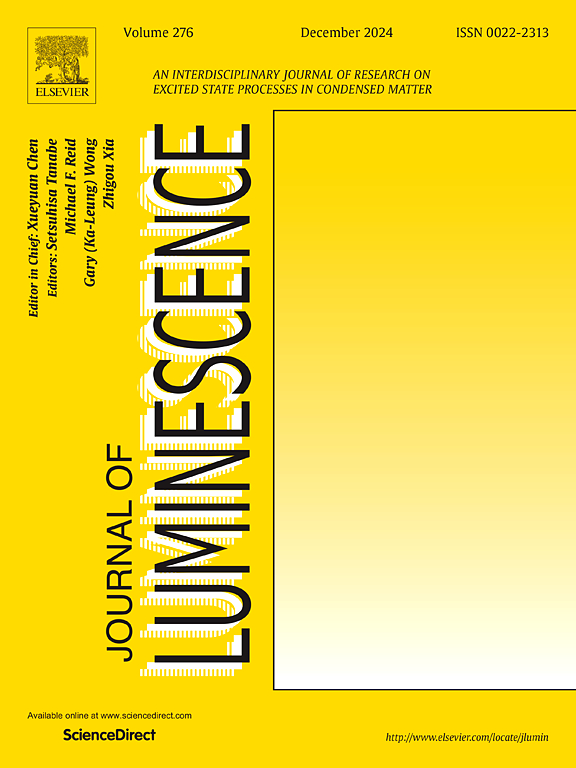Optical coherence and hyperfine structure of the F07↔5D0 transition in Eu3+:CaWO4
IF 3.3
3区 物理与天体物理
Q2 OPTICS
引用次数: 0
Abstract
Rare-earth ions doped in crystals with low nuclear-spin densities are highly promising candidates for quantum technology applications. In this study, we investigated the spectroscopic properties of the optical and the hyperfine transitions of ions in a CaWO4 crystal, where the nuclear spin arises solely from the isotope, with a natural abundance of 14%. At a temperature of 3 K, we experimentally identified four distinct crystal field environments for ions in a 0.1 at.% doped CaWO4 crystal. The optical coherence properties of Eu3+ ions in these environments were characterized. Additionally, we resolved the hyperfine structures in the ground state and excited state, and determined the ground state lifetimes using spectral hole burning techniques. These findings highlight the significant potential of : for optical quantum memory applications.
Eu3+:CaWO4中F07↔5D0跃迁的光学相干性和超精细结构
在低核自旋密度晶体中掺杂稀土离子是量子技术应用的极有前途的候选者。在本研究中,我们研究了CaWO4晶体中F07↔5D0的光谱特性和Eu3+离子的超精细跃迁,其中核自旋仅由W183同位素产生,自然丰度为14%。在3 K的温度下,我们通过实验确定了0.1 At中Eu3+离子的四种不同的晶体场环境。% Eu3+掺杂CaWO4晶体。研究了Eu3+离子在这些环境中的光学相干性。此外,我们还解析了F07基态和D05激发态的超精细结构,并利用光谱孔燃烧技术确定了F07基态寿命。这些发现突出了Eu3+:CaWO4在光量子存储应用中的巨大潜力。
本文章由计算机程序翻译,如有差异,请以英文原文为准。
求助全文
约1分钟内获得全文
求助全文
来源期刊

Journal of Luminescence
物理-光学
CiteScore
6.70
自引率
13.90%
发文量
850
审稿时长
3.8 months
期刊介绍:
The purpose of the Journal of Luminescence is to provide a means of communication between scientists in different disciplines who share a common interest in the electronic excited states of molecular, ionic and covalent systems, whether crystalline, amorphous, or liquid.
We invite original papers and reviews on such subjects as: exciton and polariton dynamics, dynamics of localized excited states, energy and charge transport in ordered and disordered systems, radiative and non-radiative recombination, relaxation processes, vibronic interactions in electronic excited states, photochemistry in condensed systems, excited state resonance, double resonance, spin dynamics, selective excitation spectroscopy, hole burning, coherent processes in excited states, (e.g. coherent optical transients, photon echoes, transient gratings), multiphoton processes, optical bistability, photochromism, and new techniques for the study of excited states. This list is not intended to be exhaustive. Papers in the traditional areas of optical spectroscopy (absorption, MCD, luminescence, Raman scattering) are welcome. Papers on applications (phosphors, scintillators, electro- and cathodo-luminescence, radiography, bioimaging, solar energy, energy conversion, etc.) are also welcome if they present results of scientific, rather than only technological interest. However, papers containing purely theoretical results, not related to phenomena in the excited states, as well as papers using luminescence spectroscopy to perform routine analytical chemistry or biochemistry procedures, are outside the scope of the journal. Some exceptions will be possible at the discretion of the editors.
 求助内容:
求助内容: 应助结果提醒方式:
应助结果提醒方式:


